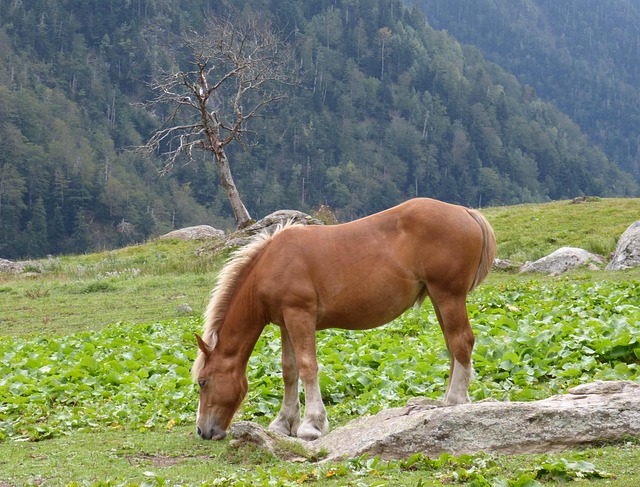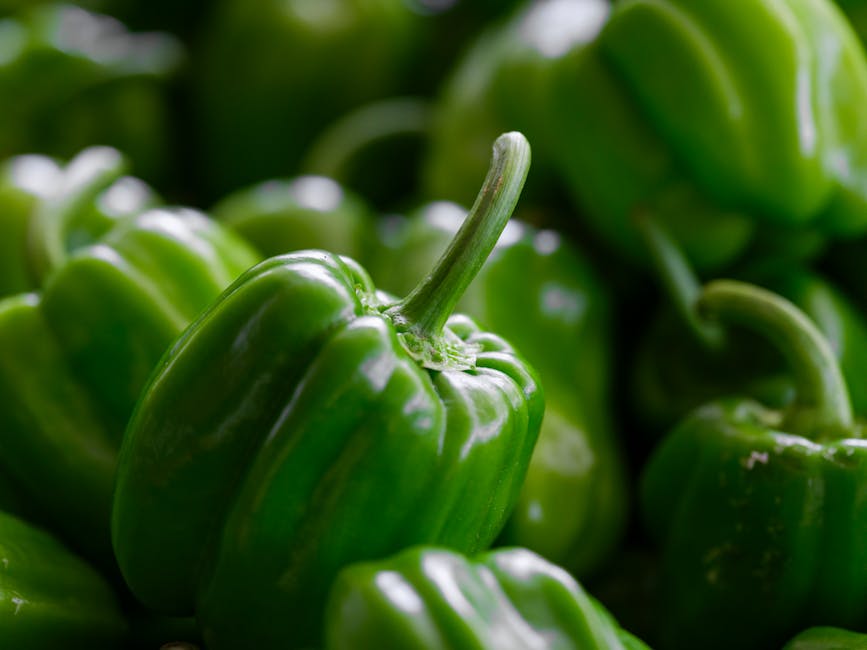In the Val d’Aran — where the Pyrenees meet France in northwest Catalonia — things get pretty wild. Nature runs riot here, with snow-frosted granite mountains rising above fir-cloaked slopes, glacier-carved valleys and piercing blue lakes. The highest peak, 9,875ft Molières, towers above forests where brown bears roam and rivers flow ferociously all the way to the Atlantic. Hike, bike, raft, canyon, ski, snowshoe or stargaze — no matter the time of year, opportunities for adventure are aplenty.
Val d’Aran’s mountainous interior is also home to some of Spain’s most picturesque villages, which provide an insight into the region’s rich history and Occitan heritage. You’ll hear snippets of the area’s own official language, Aranese, as you weave between romanesque churches and flower-draped alleys, stopping to dine at rustic restaurants that highlight seasonal ingredients reflective of the region. From high-altitude adventures to culinary and cultural experiences, here’s how best to explore Val d’Aran.
1. Amp up the adrenaline
In winter, all eyes are on the vast ski resort of Baqueira Beret, which offers over 100 miles of varied pistes for skiers and snowboarders, as well as four miles of permanent cross-country trails. Freeride fans will enjoy the glorious off-piste — reliable powder conditions are made possible thanks to the Atlantic climate bringing regular dumps of snow — while freestylers can tackle boxes, jumps and rails at Era Marmòta SnowPark. And downhill is just the tip of the iceberg for winter exploration. You can also explore the snow-covered wilderness on snowshoes, toboggan or Nordic style by husky-driven sleigh.
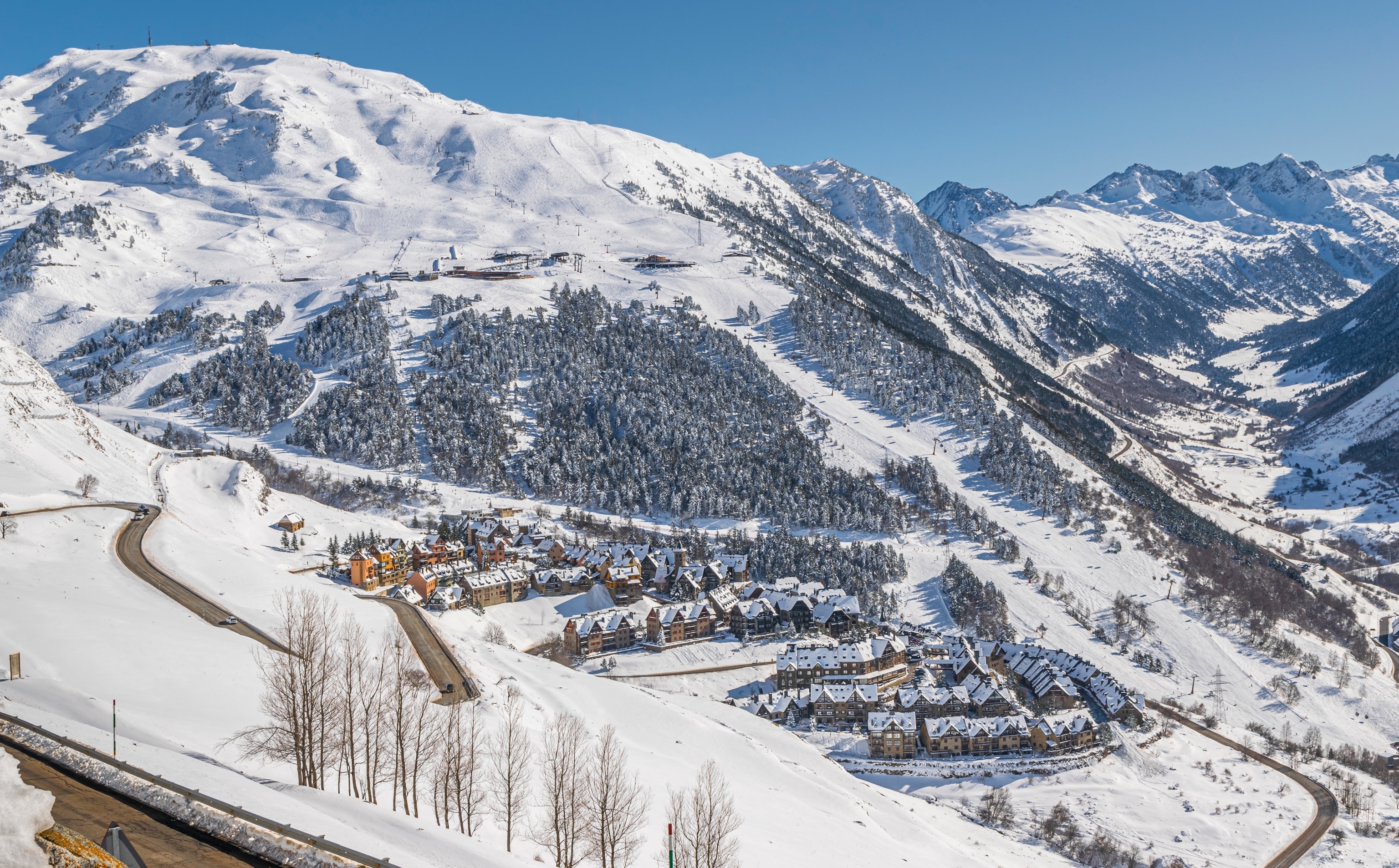
In the winter, the Baqueria Beret ski resort offers a variety of snow sports, including skiing, tobogganing and husky sledding.
Photograph by Val d’Aran
Summer presents a different picture entirely, as Val d’Aran’s meadows fill with wildflowers and bell-swinging cattle. Lace up your hiking boots or jump on a mountain bike and strike out past the lakes, streams and waterfalls of the trail-woven Alt Pirineu Natural Park and Aigüestortes and Estany de Sant Maurici National Park. Bring binoculars for a better chance of glimpsing wildlife including chamois, marmots, roe deer, bearded vultures and — if you’re very lucky — elusive brown bears.
For added adrenaline, dip a toe into mountaineering by clipping onto the dizzying, half-mile-long Poi de Unha via ferrata near Bagergue, where a series of Tibetan bridges and vertical ladders wind across sheer rock faces. A number of certified local mountain guides offer introductory climbs ideal for families and first-timers. Alternatively, take to the waters of the Garonne River for heart-pumping pursuits, including canyoning, rafting and hydrospeeding (whitewater swimming with a board and flippers), with expert guidance from one-stop shop Altis Sport in Vielha. And by night, embrace the silent magic of these mountains by heading out on a stargazing excursion.
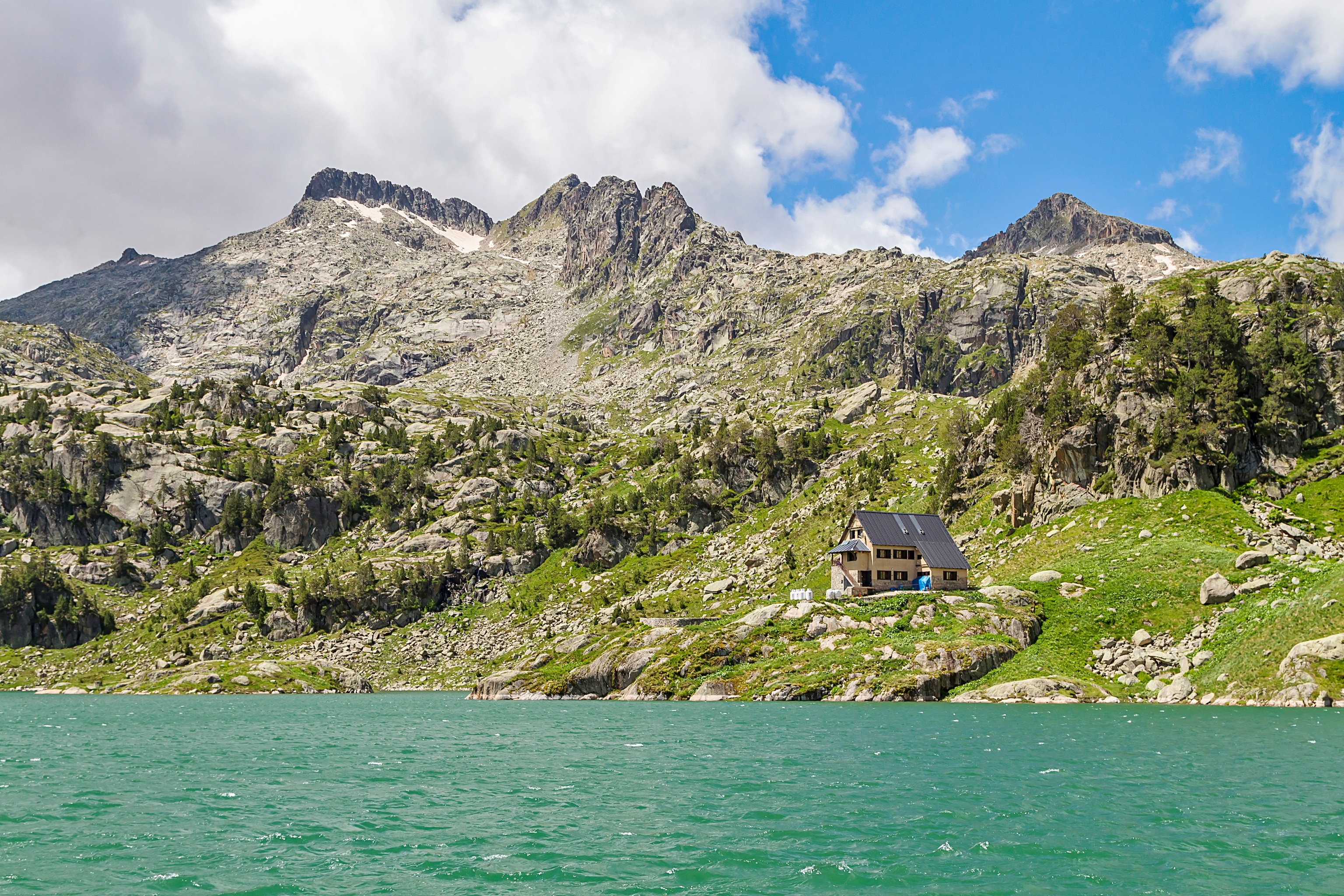
The Alt Pirineu Natural Park and Aigüestortes and Estany de Sant Maurici National Park are threaded with hiking routes, many of which pass glacial lakes and waterfalls.
Photograph by Ondacaracola Photography, Getty Images
2. Explore beautiful villages and mountain heritage
Centuries-old traditions and Celtic heritage are deeply ingrained in Pyrenean life and still felt deeply in the 33 towns and villages beading the mountains of Val d’Aran. Perched at 4656ft, Baguergue is one of the most picturesque — an ensemble of cobbled alleys, warm-stone, slate-rooted houses and window boxes that are a riot of crimson geraniums in summer.
Together with nearby villages of Garòs and Arties, Baguergue has been named by the Association of the Most Beautiful Villages in Spain as one of the country’s most stunning spots. In addition to admiring the surroundings, visitors to Baguergue can sample traditional Aranese cheese made using cow’s milk from the Lleida Pyrenees at artisanal dairy Hormatges Tarrau.
Alternatively, book onto a guided tour to journey through the valley’s history, from the Bronze Age to the present day. Or take to your wheels (on a bike or e-bike or in a car) to glimpse wonders like the Romanesque-Gothic church of Santa Maria d’Arties, with its five-storey belfry and beautifully preserved frescoes.
The urban centre of Val d’Aran’s capital, Vielha, sees historic buildings flank the River Nere, surrounded by peaks over 6,500ft-high. Visitors can explore civil buildings such as the fortified Tower of General Martinhon, which is also now home to the Museum of Val d’Aran.
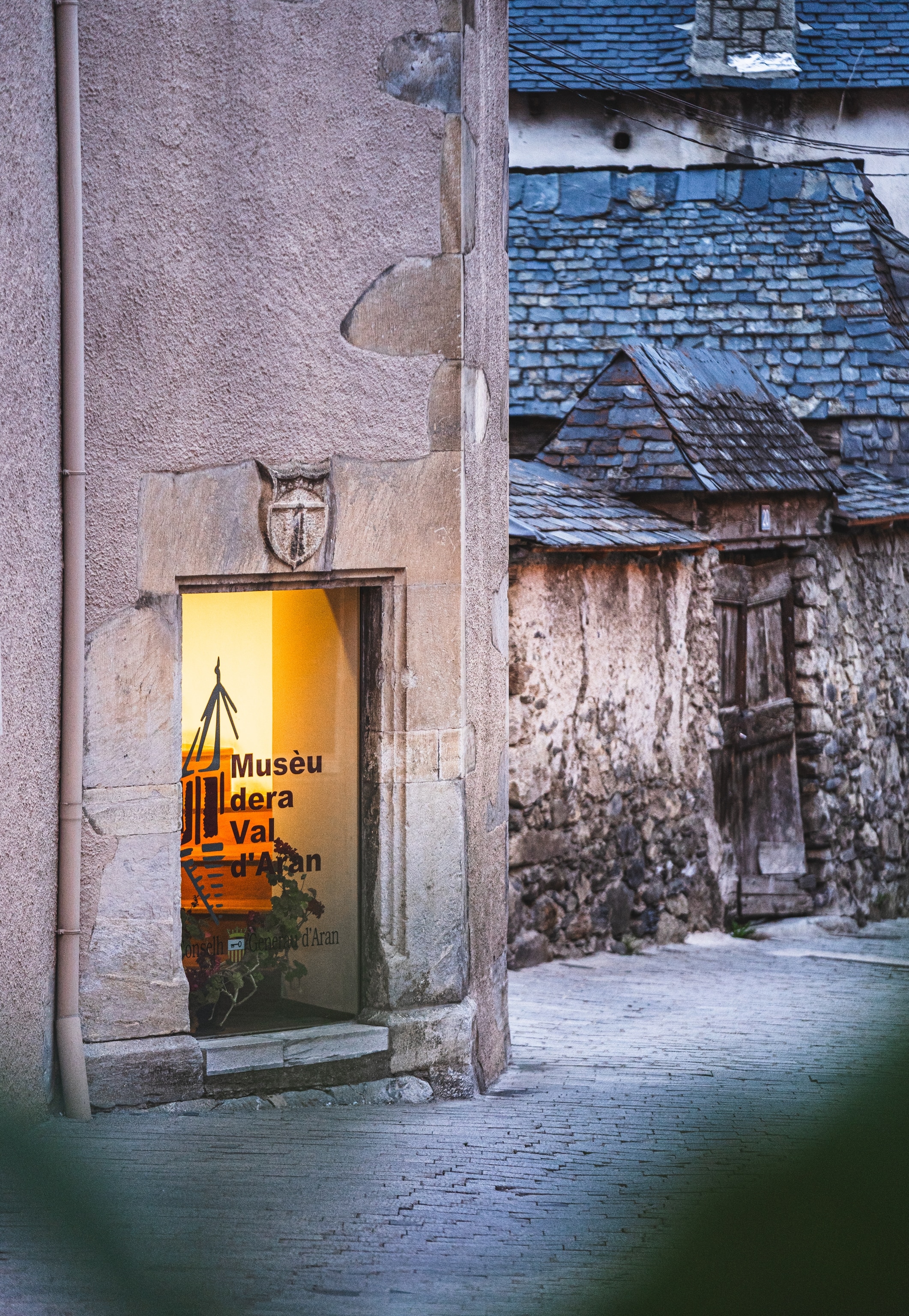
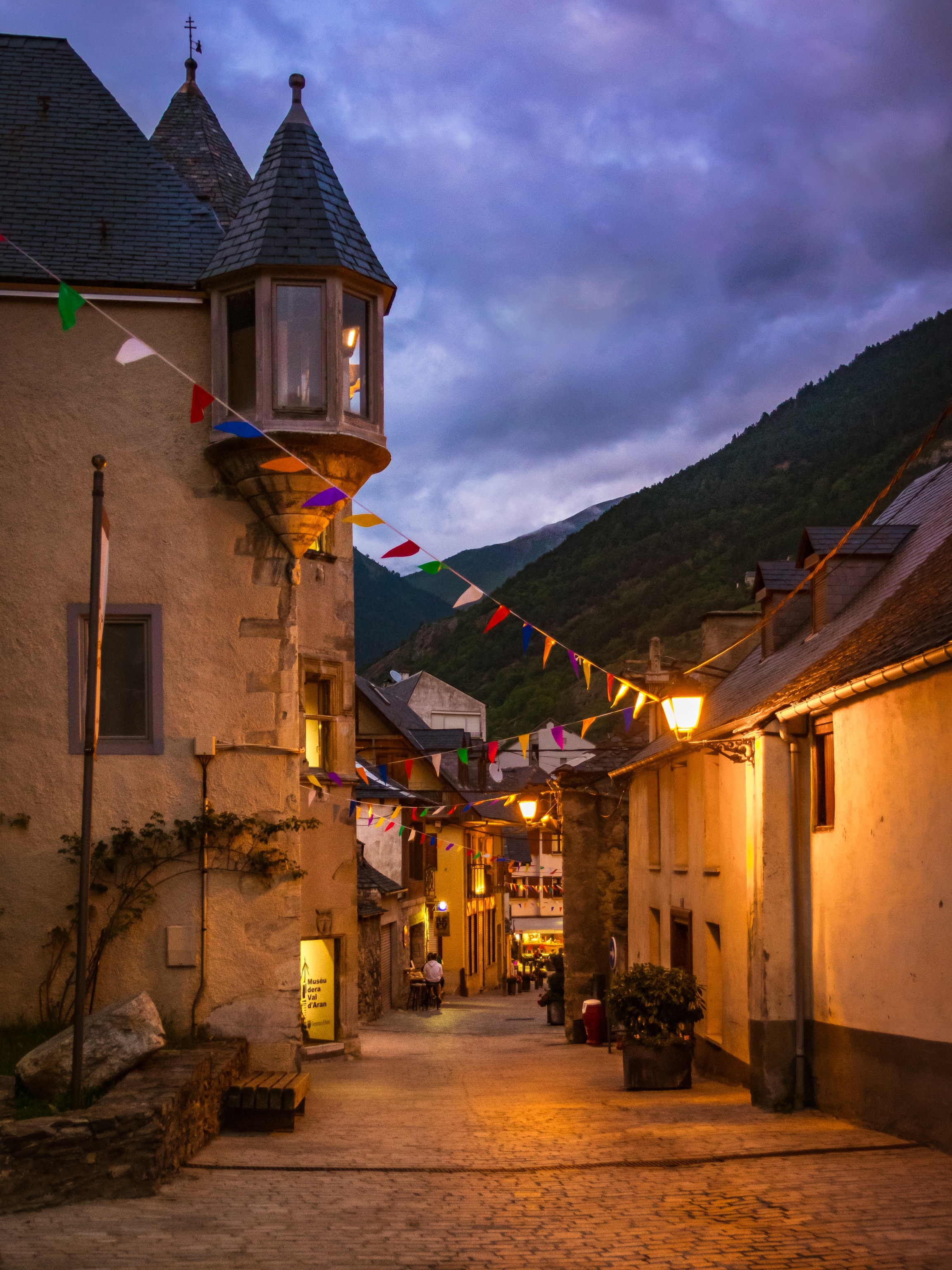
Head to the region’s picturesque capital city, Vielha, to learn about Catalan history and culture at the Museum of Val d’Aran.
Photographs by Val d’Aran
3. Enjoy award-winning regional cuisine
With its plentiful local produce and rich culinary traditions, Val d’Aran is a central part of one of Spain’s most exciting food scenes — with Catalonia having become Europe’s first World Region of Gastronomy in 2025. Here, menus sing boldly of the seasons, be it game and forest-foraged mushrooms, wild boar pâté, river trout or standout dishes like òlha aranesa, a slow-cooked soup made with vegetables, sausage, beans, and pasta, that’s perfect after a day in the mountains. Crisp, naturally fermented cider and locally harvested caviar are other must-trys.
For a fun and relaxed bite to eat, pintxos (bite-sized tapas on a cocktail stick) are the way to go. Tuesday in Vielha is pintxo-pote night, with many bars in town offering a pintxo and pote (drink) for small change. Pair them with craft beers and good vibes at refu Birreria microbrewery in Vielha, or head to Tauèrna deth Gascon for signature onion soup and rustic dining within thick stone walls. Outside of the city centre, take a 10-minute drive east to the pretty mountain town of Arties for seasonal small plates like venison carpaccio with truffle oil at Tauèrna Urtau. And over in the riverside village of Bossòst, modern-rustic El Portalet serves dishes including flame-grilled aubergine ravioli with porcini mushrooms, black garlic, salt-cured egg yolk and confit baby goat with passion and finesse.
This paid content article was created for Val d’Aran as part of a joint initiative with the Catalan Tourist Board. It does not necessarily reflect the views of National Geographic, National Geographic Traveller (UK) or their editorial staffs.
To subscribe to National Geographic Traveller (UK) magazine click here. (Available in select countries only).

